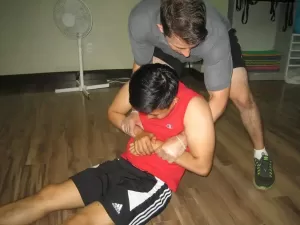Los Angeles CPR stands out above the rest of the training providers in Los Angeles, California because of very high quality programs for the most affordable rates. We have the biggest selection of training programs available to trainees, with training programs and re-certification courses available all week. Some classes are even available during the weekends and evenings because of the number of students who enrol in our programs.
The certificates / credentials
All of the courses offered at Los Angeles CPR give students certificates or training credentials. Students are required to have complete attendance and a passing grade on the post-test (certification test) to receive a training credentials. Only one of the courses (Heartsaver CPR for the public) has optional certification; students can choose not to get certified. Post-tests have practical and written portions.
Different ways of enrolment
Students can enrol in a program through four different ways. The easiest way is through the Los Angeles CPR website where prospective trainees can use the online application form to sign up. E-mails and telephone calls are alternative ways to enrol. The staff still encourages sign up in person; be sure conduct all business during operating hours only.
CPR training

Advanced Life Support programs are only for people in healthcare. They introduce trainees to the complex management of cardiac arrest in a clinical setting. ALS programs are very long, ranging from 14 to 16 hours in total, completed in a span of two days. They teach trainees about different equipment used during CPR, as well as the indication, dosage, and preparation of medication used during and after a code. Basic ECG reading is also a topic in ALS training – trainees are taught how to operate an echocardiogram and analyze its reading.
There are three basic life support programs. There are no prerequisites.
- Heartsaver CPR and AED (general public) – Lasts four hours; teaches one-person CPR, basic first aid, and AED
- Heartsaver CPR and AED C (healthcare providers) – Lasts four and a half hours; teaches one-person CPR, basic first aid, and AED
- Basic Life Support for HCPs – Lasts four and a half hours; teaches one and two-person CPR, 2010 Basic Life Support guidelines (AHA), first aid, and AED
There are two advanced life support programs. Trainees who want to enrol in an ALS class need to have a valid BLS for HCPs training credential, as well as a pass on the pre-test (practical and written exam)
- Advanced Cardiac Life Support (ACLS) – Lasts 16 hours; teaches medical management of adult victims
- Pediatric Advanced Life Support (PALS) – Lasts 14 hours; teaches the medical management of pediatric victims
